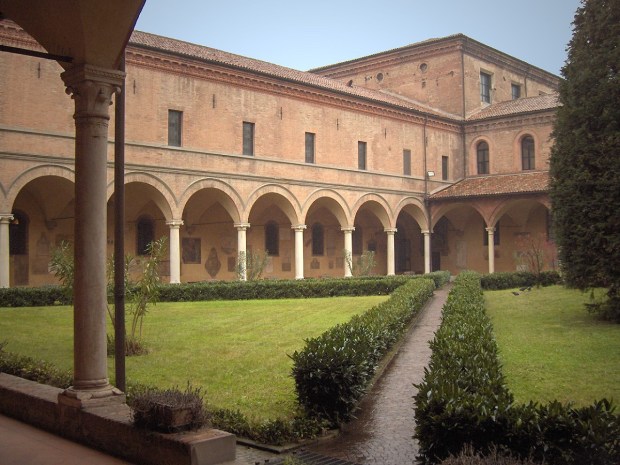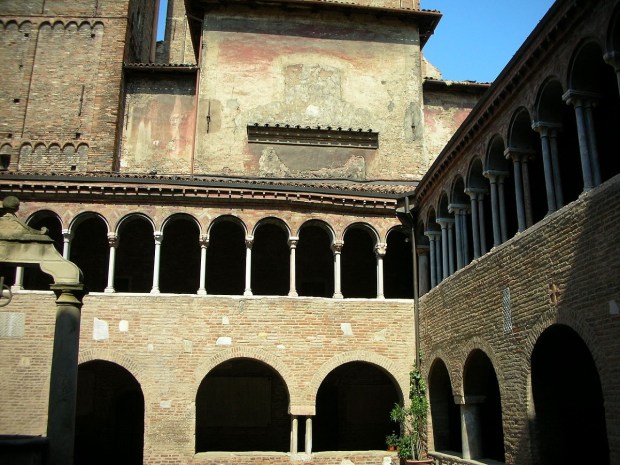Currently considered an architectural staple of the Middle Ages, monastic cloisters were inspired by the internal courtyard typical of ancient Roman houses. Architects during the Middle Ages were looking for an architectural solution that could act as a “bridge” between a monastery’s church and the other main rooms, allowing monks to perform their various activities outdoors yet away from the eyes of laymen.
This is why from France to Spain to Italy, medieval monasteries across Europe showcase a selection of beautiful cloisters spanning different styles, from the large rounded arches typical of Romanesque style to the elongated arches of Arab-Norman style.
Central Italy, with its collection of medieval towns, is a treasure trove for lovers of monastic cloisters.
Here is a selection of the most iconic monastic cloisters in the region:
Monastery of Chiaravalle della Colomba, Piacenza
Founded in the 12th century by St. Bernard, the Cistercian monastery of Chiaravalle della Colomba is the best-preserved example of a 12th-century monastery in Italy’s Emilia Romagna region. The cloister, structured around an arcade of columns made with Verona marble, acts as a connecting space between the sacristy, the refectory, the herbal laboratory where monks made liquors and herbal teas, and the dormitory.
Monks still inhabit this 800-year-old structure, which is open to the public for spiritual retreats, visits, and for buying monk-made products including liquors, herbal teas, and honey. Visitors are welcome every day 8:30 a.m.-noon and 2:30-6:30 p.m. Large groups need to book in advance (+390523-940132).

Old Monastery of San Vitale, Ravenna
Currently hosting the National Museum of Ravenna, the Old Monastery of San Vitale was founded in the 10th century by Benedictine monks. It hosts three main cloisters built between the 15th and 16th centuries that today serve as a showcase for ancient artifacts retrieved around the former monastery.
All three are made with ranges of thin columns supporting rounded arches, typical of the simple yet elegant style of Benedectine architecture. One of the cloisters leads to an old entry to the Basilica of San Vitale, a UNESCO World Heritage Site hosting some of the finest examples of Byzantine mosaics in Italy.

Old Church of San Romano, Ferrara
Founded in 990, the old Church of San Romano in Ferrara was home to Benedictine and Augustinian monks. The cloister, made of small columns ornate with capitals at the top, has been preserved by various rulers including Ferrara’s Este Family, so today you can admire the original arcades dating back to the 10th century.

San Domenico, Bologna
The cloister of the monastery of San Domenico Basilica in Bologna, famous for hosting the remains of the founder of the Dominican order, St. Dominic de Guzman, is a uniquely well-preserved example of Gothic-Romanesque architecture.
Dating back to the 11th century, the cloister is structured around simple sets of single columns ornated with Corinthian capitals. From here, you can admire the towering bell tower of San Domenico’s church.

Santo Stefano, Bologna
The two-story cloister of Santo Stefano Basilica in Bologna is a testament to the city’s longstanding Catholic roots. The lower floor, built around the year 1000, is structured around rugged and sturdy arches. The upper floor, built according to Romanesque Gothic style, is structured around thinner columns that give a sense of lightness and spaciousness. Some of the columns on the upper floor are adorned with elaborate bas-reliefs that are said to have inspired Dante Alighieri for some scenes of the Divine Comedy.





